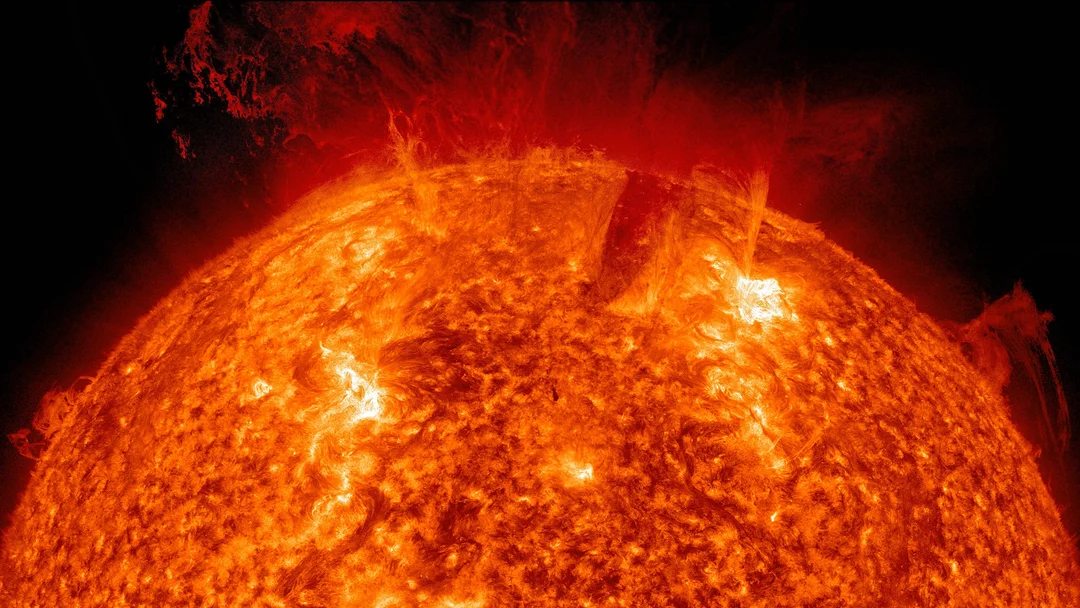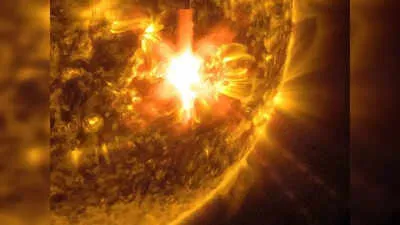
Solar Storm Emergency: Are We Prepared for a Looming ‘Internet Apocalypse’?
The Sun's recent surge in activity has triggered alarms across the globe. NASA and other agencies are sounding the alarm about the potential for devastating space weather events, with one source describing a potential 'internet apocalypse'. Are we truly prepared for the next major solar storm?
Recent X-class solar flares, originating from the **AR4087 sunspot**, have already caused widespread radio blackouts, impacting regions across multiple continents. The most recent series began on May 13, 2024, and these flares are a reminder of the Sun's potent power. The intensity has led to emergency drills and urgent discussions about our planet's vulnerability.

Emergency Preparedness in the Spotlight
FEMA conducted a large-scale "Space Weather Tabletop Exercise" on May 8, 2024, simulating a solar superstorm event set in January 2028. This drill highlighted the catastrophic potential of a major coronal mass ejection (CME), potentially causing a nationwide internet blackout, crippling the U.S. electrical grid, and resulting in significant blackouts. The simulation also took into account a hypothetical mission to the Moon, further complicating emergency response efforts.
The exercise revealed critical shortcomings in preparedness, notably a limited 30-minute warning window before a CME impact, highlighting difficulty in mobilizing defenses. The SWORM report emphasized the need to educate the public and policymakers about the threats posed by space weather effectively, which the exercise underscored.
Critical Gaps in Prediction and Response
Scientists emphasize that our current forecasting capabilities are limited, especially in predicting the magnetic field orientation (Bz component) of incoming CMEs. Knowing this critical detail ahead of time could drastically improve preparation efforts. According to solar physicist Valentín Martínez Pillet, director of the Instituto de Astrofísica de Canarias, knowing Bz is crucial, “We need to start predicting what Bz is going to be as soon as the CME has occurred, not when we measure it at L1 [Lagrange 1], where we only have one or two hours' warning.”

Proposed Solutions for Enhanced Prediction
To improve forecasting accuracy, Martínez Pillet suggests positioning sun-observing satellites at various Lagrange points to gain diverse observational angles. This approach would enable scientists to monitor the magnetic structures of CMEs before they reach Earth. ESA's Vigil mission, slated for launch in 2031, aims to achieve this by positioning a satellite at Lagrange Point 5 (L5).
The Stakes are High
While advancements are being made, our growing reliance on technology increases our vulnerability to extreme solar events. A solar storm of the magnitude of the Carrington Event of 1859 could have catastrophic consequences, potentially causing trillions of dollars in damage and disrupting essential infrastructure. While improvements are coming, it is taking time.
Are we doing enough to prepare for the next solar storm? What measures should be taken to protect our critical infrastructure and communication systems? Leave your thoughts in the comments below.
Related issues news
When is the solar flare 2025?
The alert follows an X2.7-class solar flare — the strongest of 2025 so far — erupting from a newly active sunspot, captured by Nasa's Solar Dynamics Observatory. The intense flare peaked on May 14, causing temporary radio blackouts across Europe, Asia, and parts of the Middle East.
How do solar flares cause blackouts?
However, solar flares can cause disruptions to high frequency radio waves. These radio waves refract off a region of the Earth's upper atmosphere known as the ionosphere. When a strong solar flare occurs, the radio waves in the ionosphere may be degraded, causing a blackout in communication, according to NOAA.